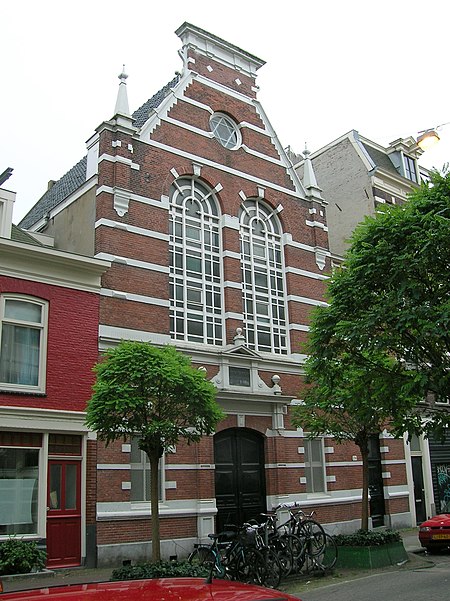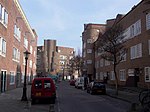Gerard Doustraat Synagogue
1892 establishmentsSynagogues in the Netherlands

The Gerard Doustraat Synagogue is an Ashkenazi Orthodox synagogue located in Amsterdam's de Pijp neighborhood. The neo-Renaissance style building was designed by architect E.M. Rood and built in 1892.The synagogue offers space for 250 men and 70 women. The building was completely renovated and refurbished in the 1990s. The synagogue hardly stands out from the residential buildings on the street, allowing services to continue until 1943, despite German occupation. The synagogue was the official residence of Chief Rabbi Justus Tal until his death in 1954.
Excerpt from the Wikipedia article Gerard Doustraat Synagogue (License: CC BY-SA 3.0, Authors, Images).Gerard Doustraat Synagogue
Gerard Doustraat, Amsterdam Zuid
Geographical coordinates (GPS) Address Website Nearby Places Show on map
Geographical coordinates (GPS)
| Latitude | Longitude |
|---|---|
| N 52.357066 ° | E 4.897909 ° |
Address
Gerard Dou Synagogue (Tesjoengat Israël)
Gerard Doustraat 238
1073 XC Amsterdam, Zuid
North Holland, Netherlands
Open on Google Maps










